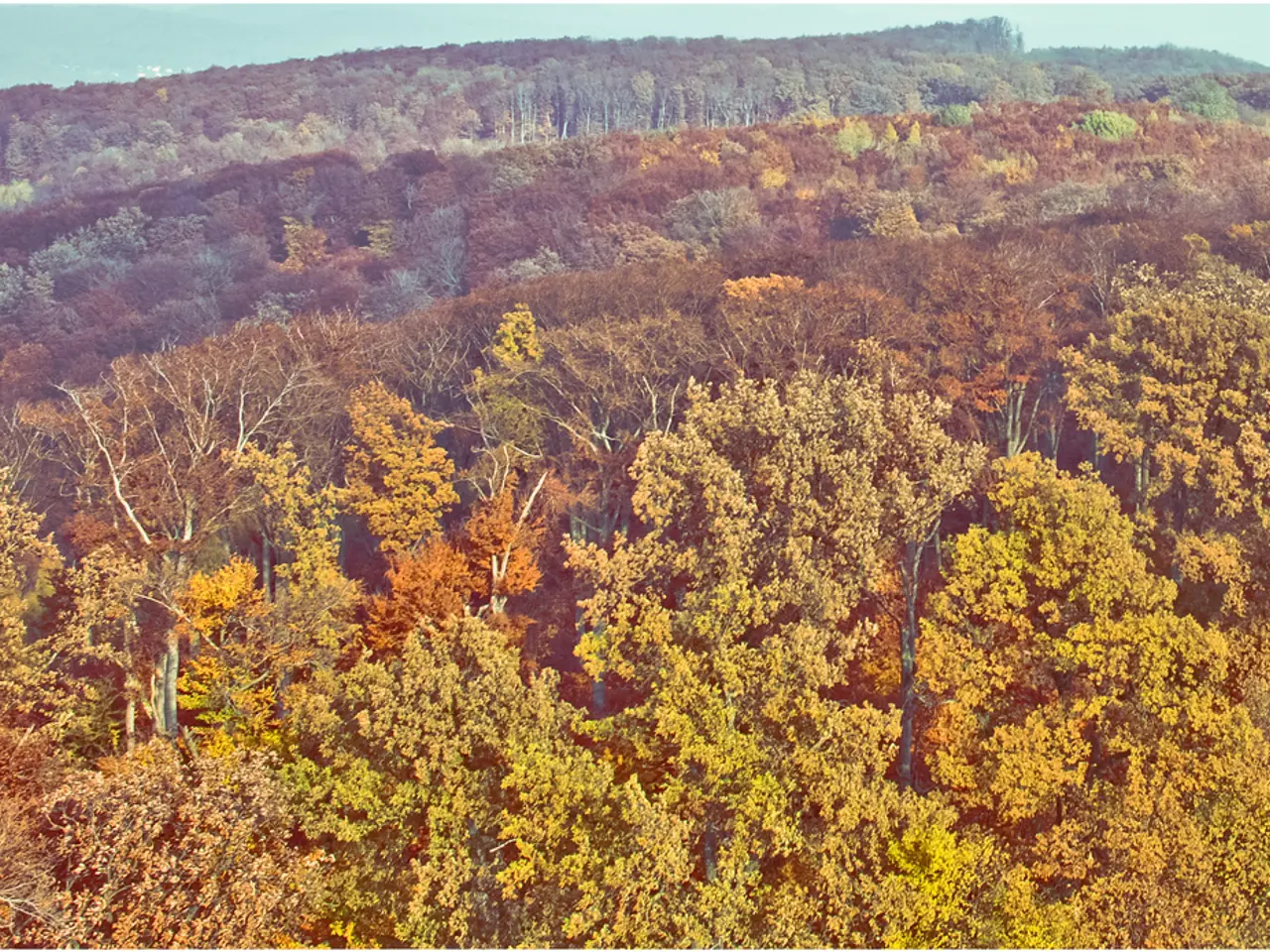Shifting Focus in Gardening: A Climate Change Dilemma - Are lemons gradually replacing apples as garden favorites?
Adapting to Climate Change: UK Gardeners Embrace Resilient Plant Choices
In the face of a changing climate, UK gardeners are adapting their plant choices and gardening practices to create more resilient and biodiverse gardens.
James Hitchmough, a gardener based in Somerset, is one such pioneer. He is planting a new garden with an eye towards future climate predictions, experimenting with planting South African geophyte, Cyrtanthus obliquus, outside in his garden. Meanwhile, Dan Pearson, a designer in the same region, has noticed changes in the plants that thrive in his garden, including the inability to grow cimicifugas and acteas.
Gardeners are increasingly selecting drought-resistant and climate-resilient plants, often originating from warmer and drier regions such as South America, the Mediterranean, and Australasia. For example, historic gardens like Sheffield Park are replacing traditional plants with exotic, drought-tolerant species like monkey puzzle trees and succulents to build resilience and increase biodiversity.
In addition to plant selection, gardeners are reconsidering garden design and plant placement. They are utilizing microclimates within gardens such as sun traps, sheltered corners, and thermal mass walls to optimize growing conditions for more sensitive plants. Modern garden designs increasingly incorporate water management techniques like rainscaping to direct and conserve water and to cope with both drought and flooding.
Gardening practices are also shifting towards less intervention and working with natural soil and plant conditions. This approach helps plants become more resilient to drier conditions by toughening them through more minimal watering and avoiding artificial fertilizers and over-irrigation.
Organizations such as the Royal Horticultural Society (RHS) are leading efforts to reduce gardening's carbon footprint by replacing fossil fuel equipment with electric machinery, improving energy and water efficiency, and scientifically assessing plants' climate resilience to guide future gardening strategies.
The Ventnor Botanic Garden on the Isle of Wight has taken this a step further by planting the first citrus grove in the UK. Wayne Williams, head gardener at Ventnor Botanic Garden, has planted lemons, oranges, grapefruits, Buddha's hand citrus, and a rare caviar citrus. Conditions have become mild enough in the UK for citrus plants to thrive outdoors, and Ginkgo, metasequoia, and liriodendron are also likely to do well in future UK climates.
However, not all trees are expected to cope with the changing climate. Climate change is expected to significantly impact the trees we can grow, with our European ash, Fraxinus excelsior, likely to struggle. Southern European ash, Fraxinus angustifolia, could be a good alternative.
Tom Brown, head gardener at West Dean in West Sussex, is responsible for a collection of over 100 different varieties of exquisitely trained fruit trees, including apples. However, apples may not be able to cope with the changing UK climate. In order to increase the chances of future success, Tom Brown is using M25 rootstock for his replacement fruit trees.
Errol Reuben Fernandes, head of horticulture at the Horniman Museum gardens in southeast London, is struggling with horse chestnut trees affected by horse chestnut leaf miner and bleeding canker. Despite these challenges, UK gardeners remain committed to adapting their gardens to the changing climate, embracing drought-tolerant, exotic, and deep-rooted plants; designing gardens for extreme weather; managing water smartly; and adopting sustainable, low-intervention practices.
The garden has always been an average of five degrees warmer than the rest of the British Isles, providing a unique opportunity for UK gardeners to experiment with a wide variety of plants and gardening techniques. As the climate continues to change, this adaptability will be crucial in creating resilient and thriving gardens for future generations.
[1] The Guardian, "UK gardeners adapt to climate change by embracing drought-tolerant plants," link
[2] Royal Horticultural Society, "Climate Change and Gardening," link
[3] RHS Chelsea Flower Show, "2021 Show Garden: The Resilient Garden," link
[4] The Telegraph, "How to garden in a changing climate," link
- UK gardeners are increasingly choosing plants from warmer, drier regions like South America, the Mediterranean, and Australasia, such as the South African geophyte, Cyrtanthus obliquus, to create more resilient gardens.
- Dan Pearson, a gardener and designer in Somerset, is observing changes in his garden's plants, with the inability to grow cimicifugas and acteas.
- In order to build resilience and increase biodiversity, historic gardens like Sheffield Park are replacing traditional plants with exotic, drought-tolerant species like monkey puzzle trees and succulents.
- Gardeners are utilizing microclimates, such as sun traps and thermal mass walls, to optimize growing conditions for more sensitive plants and incorporate modern garden designs that include water management techniques like rainscaping.
- Gardening practices are shifting towards less intervention, working with natural soil and plant conditions, to help plants become more resilient to drier conditions.
- Organizations like the Royal Horticultural Society are working to reduce gardening's carbon footprint by adopting sustainable practices, such as using electric machinery and scientifically assessing plants' climate resilience.




